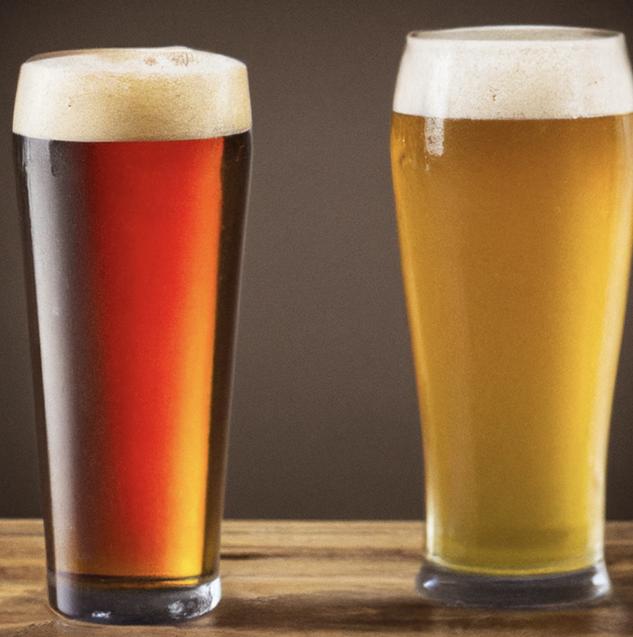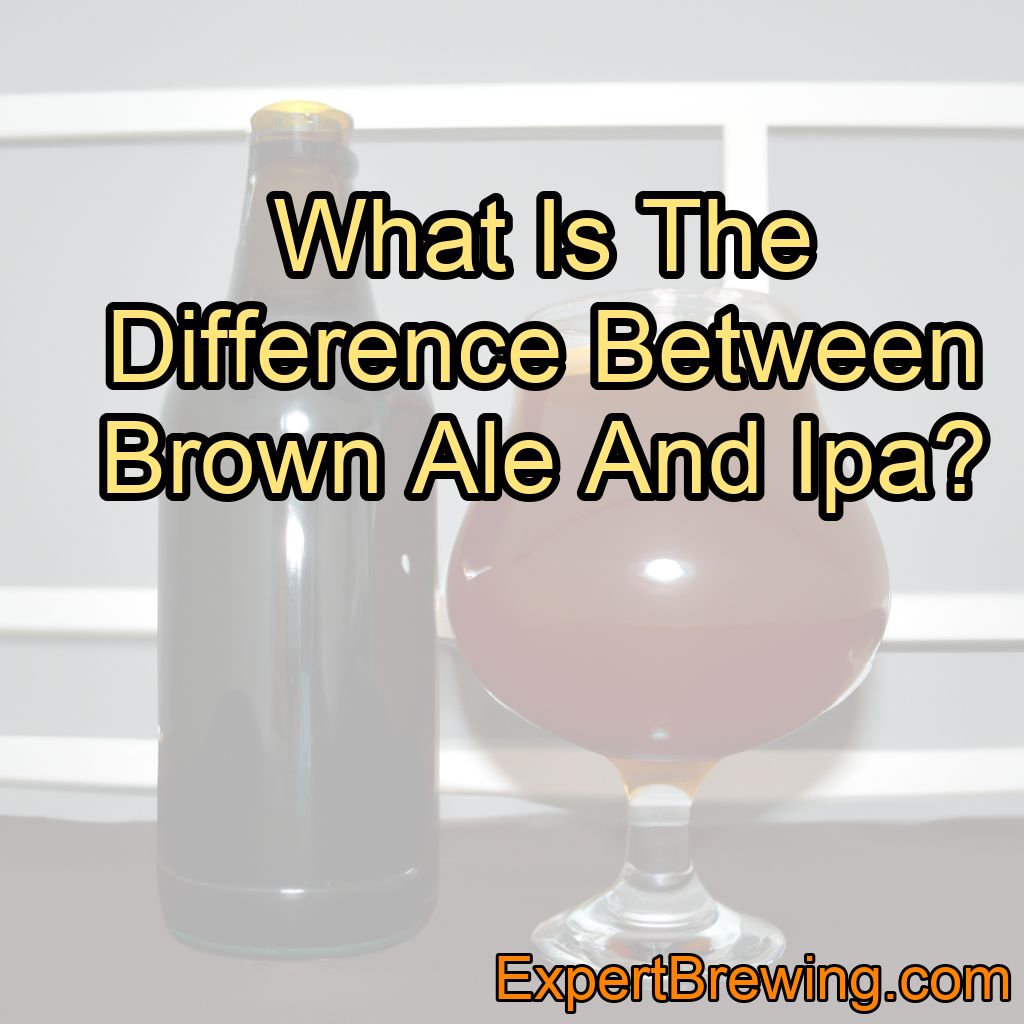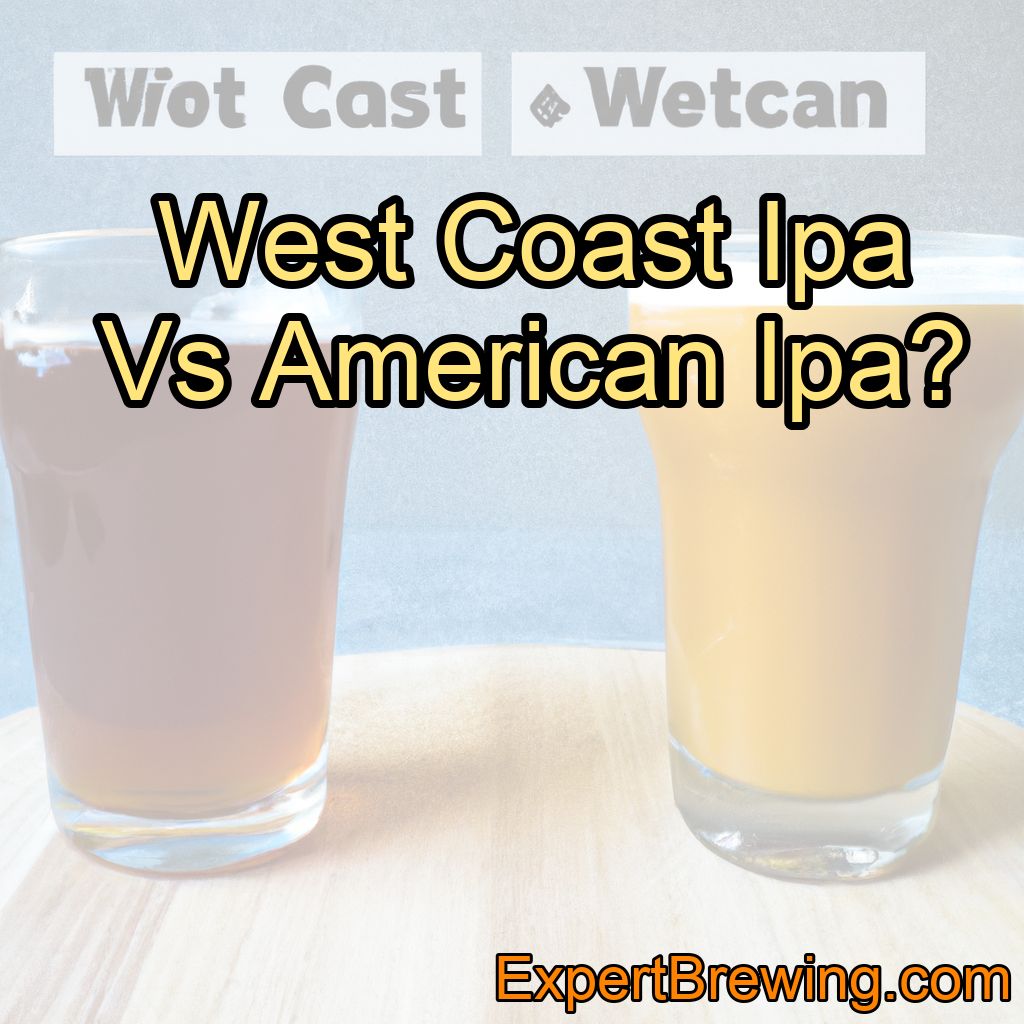As a brewer, I constantly encounter questions about the different types of beers that are available in the market.
One questions that I received recently was: “What is the difference between brown ale and IPA?” In this blog post, I will provide an in-depth explanation of the differences between these two popular types of beer and share some of my personal experiences with brewing and tasting both brown ale and IPA.
If you’re in a hurry, here’s the key take away:
The main difference between brown ale and IPA is in their taste profiles, ingredients, and brewing techniques.
Brown ales are typically characterized by their malty and slightly sweet flavors, while IPAs are known for their strong hoppy bitterness and higher alcohol content.
A Brief History of Brown Ale and IPA
Brown Ale
Brown ale has its roots in the beers of the 18th century, when British brewers began producing a wide range of dark-colored beers, ranging from mild to strong. The term “brown ale” was used to describe a variety of beers, but it was not until the early 20th century that the style became more defined.
Modern brown ales can be traced back to the famous Newcastle Brown Ale, which was introduced in 1927 as a reaction to the heavy and often unpalatable stouts and porters that were popular at the time. The smooth and easy-drinking nature of this beer made it an instant hit, and it remains one of the most popular brown ales in the world today.
IPA
The story of the India Pale Ale (IPA) dates back to the 18th century, when British brewers began exporting beer to the colonies in India. The long sea journey required a beer that could withstand the heat and motion of the ship, so brewers started creating a stronger, more heavily hopped beer that would resist spoilage during the voyage.
The IPA’s popularity soared in Britain during the 19th century, and the style eventually made its way to the United States, where it was embraced by craft brewers in the 1980s and 1990s. Today, IPAs are the most popular style of craft beer in the United States, with countless variations and sub-styles available.
Ingredients: Malt and Hops
A key difference between brown ale and IPA lies in the ingredients used to brew the beer, particularly the types of malt and hops.

Here is a brief overview of the main ingredients that define these two styles:
Brown Ale
- Malt: Brown ales typically use a combination of pale, caramel, and chocolate malts to create a rich and flavorful malt backbone. These malts give the beer its characteristic brown color, as well as its malty, slightly sweet, and sometimes nutty or toasty flavors.
- Hops: The hops used in brown ales are generally mild and earthy, such as Fuggle, East Kent Goldings, or Willamette. These hops provide a subtle bitterness that balances the sweetness of the malt, without overpowering the beer’s overall flavor profile.
IPA
- Malt: IPAs are typically brewed with a base of pale malt, which provides a light, crisp canvas for the hops to shine. Some IPAs also use small amounts of specialty malts, such as caramel or Munich, to add color and a touch of maltiness to the beer.
- Hops: The defining characteristic of an IPA is its strong hop presence. IPAs are brewed with generous amounts of hops, which can range from floral and citrusy to piney and resinous. Popular hop varieties used in IPAs include Cascade, Centennial, Chinook, and Citra, among others. The hops provide a strong bitterness and intense aroma to the beer.
Brewing Techniques
The brewing techniques used to create brown ales and IPAs differ in several ways, particularly in the mash and boil stages:
Brown Ale
1. Mash: Brown ales typically use a single-infusion mash, where the grains are steeped in hot water (usually around 152°F) for an hour to convert the starches into fermentable sugars. The darker specialty grains are added to the mash to impart their color and flavor to the beer.
2. Boil: During the boil, hops are added at different stages to provide bitterness, flavor, and aroma. Brown ales typically have a lower hop rate than IPAs, which means fewer hops are added during the boil.
3. Fermentation: Brown ales are usually fermented with ale yeast strains that produce fruity or spicy esters, which contribute to the beer’s overall flavor and aroma.
IPA
1. Mash: IPAs also use a single-infusion mash, but the mash temperature is often slightly higher (around 154-156°F) to create a more fermentable wort, which results in a drier, less malty beer.
2. Boil: IPAs are known for their high hopping rates, which means that more hops are added during the boil, and additional hops may be added during the whirlpool stage to maximize flavor and aroma extraction.
3. Fermentation: IPAs are typically fermented with clean, neutral ale yeast strains that allow the hop flavors and aromas to take center stage.
Flavor Profiles
The flavor profiles of brown ales and IPAs are distinct, with brown ales being more malt-focused and IPAs being more hop-focused:
Brown Ale
- Malt-forward flavors, including caramel, toffee, nuttiness, and sometimes chocolate or coffee
- Mild hop bitterness and earthy or herbal hop flavors
- Medium body and moderate carbonation
- Low to moderate alcohol content, usually between 4-6% ABV
IPA
- Hop-forward flavors, ranging from citrus and tropical fruit to pine and resin
- Strong hop bitterness that balances the malt sweetness
- Medium body and moderate to high carbonation
- Moderate to high alcohol content, usually between 5.5-7.5% ABV
Color and Appearance
The color and appearance of brown ales and IPAs are another distinguishing factor between the two styles:
Brown Ale
- Brown ales range in color from a reddish-brown to a deep, dark brown, with some examples being almost black
- The beer is usually clear, although some examples may be slightly hazy due to the use of darker specialty grains

IPA
- IPAs vary widely in color, from a pale straw to a deep amber, depending on the malt used
- The beer is often clear, although some examples may be hazy or even opaque, particularly in the case of New England-style IPAs
Alcohol Content
There is a notable difference in alcohol content between brown ales and IPAs:
Brown Ale
- Brown ales are generally lower in alcohol content, with most examples ranging between 4-6% ABV
- This makes them more sessionable and easy-drinking, particularly when compared to IPAs
IPA
- IPAs typically have a higher alcohol content, ranging from 5.5-7.5% ABV for standard IPAs and even higher for double or imperial IPAs
- The increased alcohol content contributes to the beer’s overall body and mouthfeel, as well as providing additional warmth and complexity
Pairing with Food
Both brown ales and IPAs can be excellent choices for pairing with food, but their differing flavor profiles make them suitable for different types of dishes:
Brown Ale
- Brown ales pair well with hearty, savory dishes such as roasted meats, stews, and grilled vegetables
- Their malty sweetness also complements nutty cheeses, such as Gruyère or cheddar, as well as desserts featuring caramel or chocolate flavors
IPA
- IPAs are a great match for spicy dishes, such as Indian or Thai curries, as the hop bitterness helps to cleanse the palate between bites
- They also pair well with rich, fatty foods like burgers, fried chicken, and blue cheese, as the bitterness cuts through the richness and refreshes the palate
As a brewer, I have had the pleasure of brewing and tasting countless brown ales and IPAs over the years. Here are a few of my personal observations and experiences with these two styles:
- Brown ales are often overlooked in favor of more hop-forward styles like IPAs, but they can be incredibly satisfying and complex when brewed well. I particularly enjoy the interplay of sweet, malty flavors with subtle hop bitterness that characterizes a well-crafted brown ale.
- IPAs, on the other hand, offer a seemingly endless variety of hop flavors and aromas to explore. One of my favorite aspects of brewing IPAs is experimenting with different hop combinations to create unique flavor profiles that showcase the incredible diversity of hops available to brewers today.
- In terms of food pairings, I find that brown ales are a versatile and crowd-pleasing option for dinner parties, as their malty sweetness pairs well with a wide range of dishes. IPAs, meanwhile, are my go-to choice for spicy foods and backyard barbecues, where their bold hop flavors and higher alcohol content can stand up to the intense flavors of grilled meats and spicy sauces.
Conclusion: Brown Ale vs. IPA – Key Differences
So, what is the difference between brown ale and IPA? The main difference lies in their taste profiles, ingredients, and brewing techniques, with brown ales being characterized by their malty and slightly sweet flavors, and IPAs being known for their strong hoppy bitterness and higher alcohol content.
Here are 10 key differences between brown ale and IPA to remember:
1. Brown ales originated in 18th century Britain, while IPAs were developed to withstand the long sea journey to India
2. Brown ales use a combination of pale, caramel, and chocolate malts, while IPAs primarily use pale malt
3. Brown ales feature mild, earthy hops, while IPAs showcase a wide range of hop flavors and aromas
4. Brown ales have a malt-focused flavor profile, while IPAs are hop-forward
5. Brown ales have a lower hop rate than IPAs
6. Brown ales have a medium body and moderate carbonation, while IPAs have a medium body and moderate to high carbonation
7. Brown ales have a lower alcohol content, usually between 4-6% ABV, while IPAs can range from 5.5-7.5% ABV or higher
8. Brown ales have a reddish-brown to dark brown color, while IPAs can range from pale straw to deep amber
9. Brown ales pair well with hearty, savory dishes and nutty cheeses, while IPAs are a great match for spicy foods and rich, fatty dishes
10. Brown ales are often overlooked in favor of hop-forward styles like IPAs, but both styles offer unique and satisfying flavor experiences for beer lovers
FAQs
What brands are brown ale?
Some popular brands of brown ale include Newcastle Brown Ale, Samuel Smith’s Nut Brown Ale, and Sierra Nevada Tumbler Autumn Brown Ale.
Is Sam Adams a brown ale?
No, Sam Adams is not a brown ale. It is a brand of beer that produces a variety of styles, including lagers, ales, and seasonal brews.
Is an ale the same as an IPA?
No, an ale is a type of beer that is fermented at warmer temperatures using a specific type of yeast, while an IPA (India Pale Ale) is a specific style of ale that is characterized by its hoppy flavor and aroma.
What are examples of American brown ale?
Some examples of American brown ale include Sierra Nevada Tumbler, Brooklyn Brown Ale, and Rogue Hazelnut Brown Nectar.
What is an example of a brown ale?
Newcastle Brown Ale is an example of a brown ale.
What makes a beer a brown ale?
Brown ales are typically characterized by their malt-forward flavor profile, which includes notes of caramel, toffee, and sometimes chocolate. They are often medium-bodied and have a deep amber to brown color. Brown ales also tend to have a lower hop profile, which allows the malt flavors to shine through.




